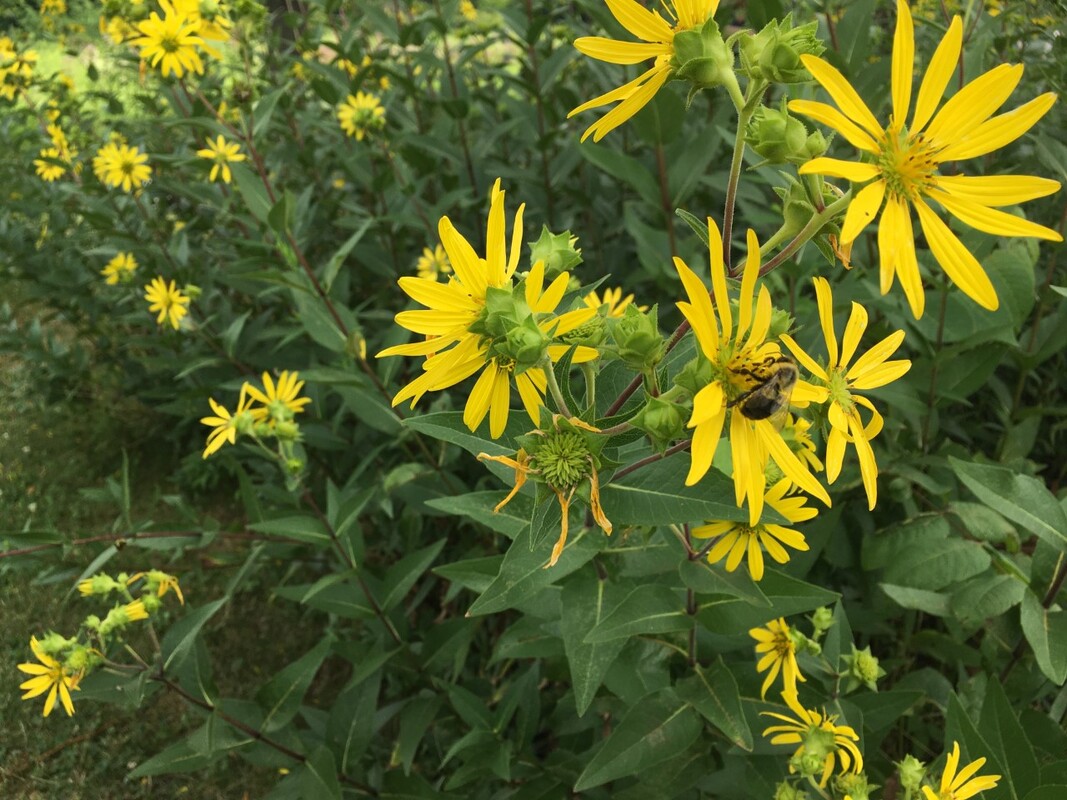During summer tours at the SBG, visitors often inquire about the identity of some of our less familiar native plants. At this time of year, one of the most frequent questions is about rosinweed (Silphium integrifolium), which is easily found growing between the Monarch Waystation and Serenity Space. Its larger cousin, cup plant (Silphium perfoliatum ) grows even taller–up to 9 feet!-- and can be seen lining the path from the parking area to the demonstration gardens, and throughout the meadow.
Members of the Asteraceae family, these statuesque beauties boast bright yellow blooms, and birds love the seeds that follow. The resinous juices they possess inspired the genus name Silphium,which is derived from the Greek word ‘silphion’. Silphion was a North African plant with a resinous juice used for medicinal purposes, and was so prized that the plant appeared on ancient Greek coins.
Juices aside, an easy way to identify either Silphium is by its leaves: Rub one between your fingers, and you’ll immediately notice the unmistakable, sandpapery feel.
Silphium grows easily from seed, and is at home in a wide variety of soils, even difficult clay soil. If you like your native plants on the large side, there’s probably a Silphium for you!


 RSS Feed
RSS Feed